Keyword: collage
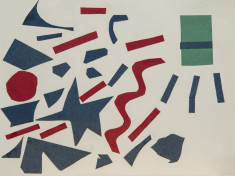
Abstract Collage
A class assignment at art school influenced by Matisse’s cut-outs. The static green rectangle contrasts with the dynamic red and blue shapes which appear to explode with energy. Though the image uses abstract shapes, one could interpret these forms as a radio
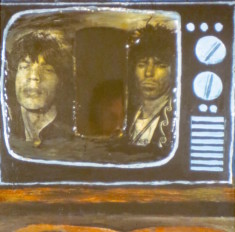
Mirror Mirror
This collage painting, originally titled “Narcissism,” brings together three elements: a photo of swaggering rock stars (Mick Jagger and Keith Richards), a painting of a small old-fashioned television set and a mirror glued onto the surface of the painting. Robert’s
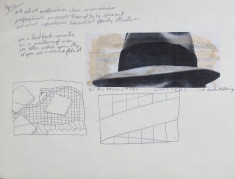
Study for Roller Coaster 1
Robert was fascinated by New York city, a place he recognized as capital of the international art world. New York reflected much of the promise and excess of America. On Robert’s first trip there, with classmates from NSCAD, he spent
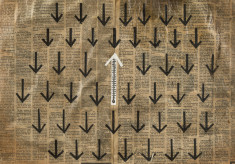
Mirage (Arrows)
In all, Robert explores six versions of the mirage theme for his “Oppositions” exhibition. Each version uses different media: one is a slide projection, another is a see-through sculpture; two feature paintings on sandpaper; the above image is painted on
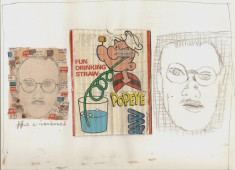
Popeye & Criminal Collage
In art school, Robert was introduced to Pop Art by his British-Canadian painting instructor John Clark. Pop Art borrowed imagery from mass produced sources, (comics, ads, movies, as well as sensational tabloid imagery of crime and violence), to portray a society with a short attention span bombarded
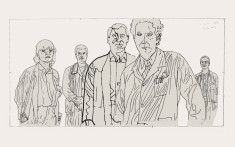
Collage Study for Doctors
In Robert’s initial drawing all the doctors were the same size. Robert cut this drawing apart and enlarged some figures, reduced others, and over-lapped the doctors’ bodies to create the effect of distance, without defining the space around them. The doctors
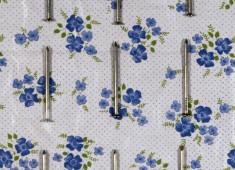
Nail Garden (detail)
Pictures are usually hung on walls using small nails discreetly hidden from sight. Robert makes these hidden elements visible by gluing them to the front surface of his image. He also reaches into art history to cite the use of wallpaper
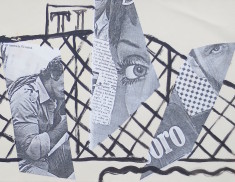
Study for Rollercoaster 2
New York is conceived as a roller coaster through a minefield of advertisements. This second collage study for Rollercoaster (America as a place of hyper reality) shows a close-up of the grid structure that supports the twisting Coney Island thrill
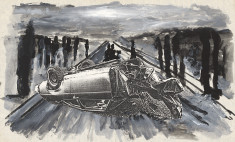
Study for Accident
Robert uses photocopy, acrylic paint and collage to test an idea for a painting. The source photo, from a government file, only shows the car; there are no people present at the scene. Robert’s background wash drawing gives hints of placing figures,
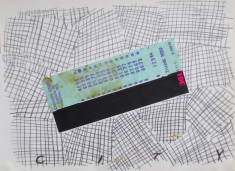
City collage with grid background
From the moment Robert moved to Halifax he tried to capture the feeling of a city in an artwork. This work combines collage, line drawing and text. The cross-hatched lines, such an important feature of Robert’s realist work, is used here